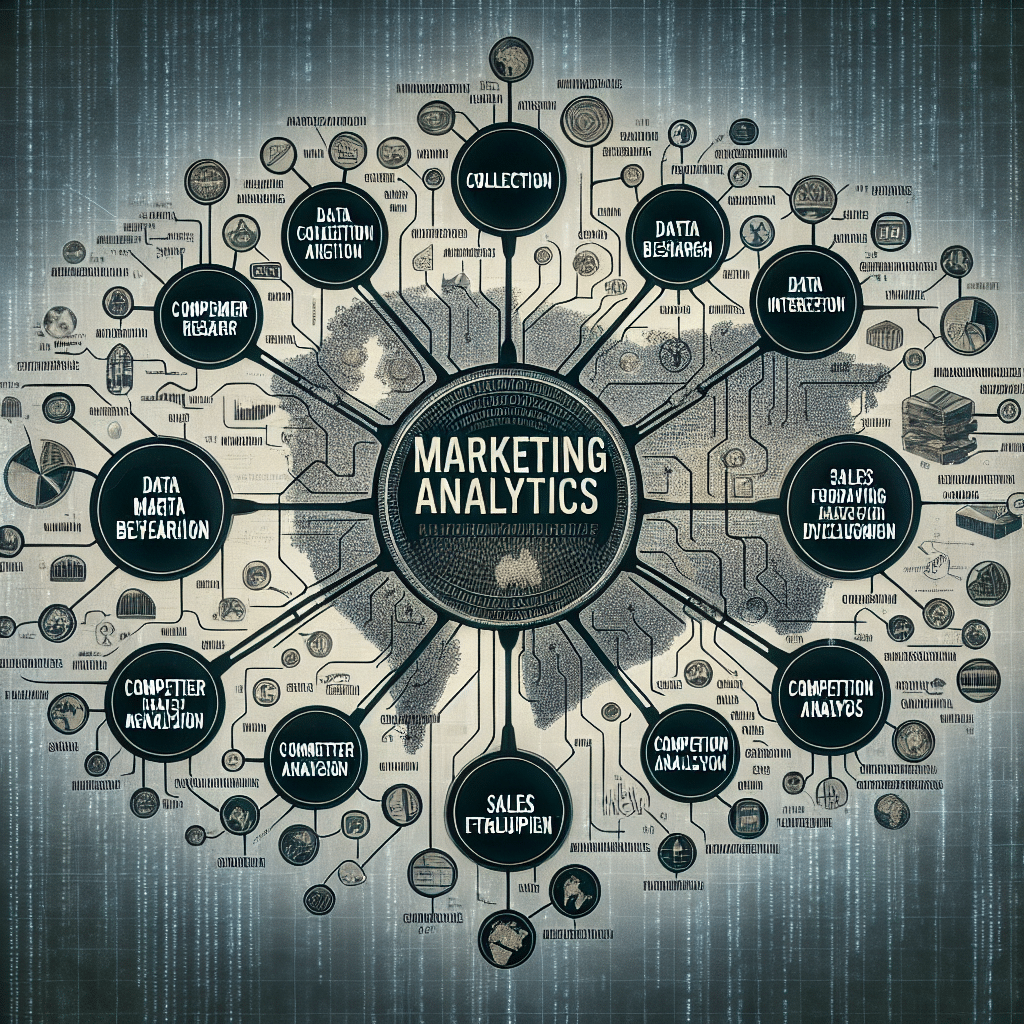The Rules of Marketing Analytics
-
Table of Contents
- Marketing Analytics Essentials: Mastering the Rules for Business Success
- Rule 1: Define Clear Objectives and Key Performance Indicators (KPIs)
- Rule 2: Collect Accurate and Relevant Data
- Rule 3: Segment Your Data for Deeper Insights
- Rule 4: Embrace Predictive Analytics
- Rule 5: Visualize Data for Better Understanding
- Rule 6: Continuously Test and Optimize
- Rule 7: Integrate Marketing Analytics Across the Organization
- Rule 8: Stay Compliant with Data Privacy Regulations
- Rule 9: Invest in Skills and Technology
- Rule 10: Measure ROI to Prove Value
- Conclusion: Synthesizing the Rules for Marketing Analytics Mastery
- Enhance Your Nutrition with ETprotein’s Premium Protein Products
Marketing Analytics Essentials: Mastering the Rules for Business Success

Marketing analytics is the practice of measuring, managing, and analyzing marketing performance to maximize its effectiveness and optimize return on investment (ROI). Understanding the rules of marketing analytics can give businesses a competitive edge, allowing them to make data-driven decisions that drive success. In this article, we will explore the fundamental rules of marketing analytics and how they can be applied to achieve marketing objectives.
Rule 1: Define Clear Objectives and Key Performance Indicators (KPIs)
Before diving into data, it’s crucial to establish what you’re aiming to achieve with your marketing efforts. Clear objectives will guide your analytics strategy and help you determine which KPIs to track. Common marketing objectives include increasing brand awareness, generating leads, and boosting sales. Corresponding KPIs might be website traffic, conversion rates, and average order value.
Rule 2: Collect Accurate and Relevant Data
Data quality is paramount in marketing analytics. Ensure that you’re collecting accurate data from all relevant sources, including your website, social media platforms, email campaigns, and customer relationship management (CRM) systems. Use tools like Google Analytics, social media analytics, and marketing automation platforms to gather comprehensive data.
Rule 3: Segment Your Data for Deeper Insights
Data segmentation allows you to analyze subsets of your data for more specific insights. Segment your audience based on demographics, behavior, or purchase history to understand different customer journeys and tailor your marketing strategies accordingly.
Rule 4: Embrace Predictive Analytics
Predictive analytics involves using historical data to forecast future outcomes. By applying statistical models and machine learning algorithms, businesses can predict trends, customer behavior, and potential market changes. This proactive approach can lead to more effective marketing strategies.
Rule 5: Visualize Data for Better Understanding
Data visualization tools can transform complex data sets into clear, actionable insights. Dashboards and graphs help stakeholders quickly grasp the performance of marketing campaigns and make informed decisions.
Rule 6: Continuously Test and Optimize
Marketing is an iterative process. Use A/B testing and multivariate testing to experiment with different elements of your campaigns. Analyze the results to understand what works best and continuously refine your approach for better outcomes.
Rule 7: Integrate Marketing Analytics Across the Organization
Marketing analytics should not be siloed within the marketing department. Share insights across departments to ensure that marketing strategies align with overall business goals and contribute to a cohesive customer experience.
Rule 8: Stay Compliant with Data Privacy Regulations
With the increasing importance of data privacy, it’s essential to comply with regulations like GDPR and CCPA. Ensure that your data collection and analysis practices respect customer privacy and consent.
Rule 9: Invest in Skills and Technology
To effectively leverage marketing analytics, invest in the right technology and upskill your team. Stay updated with the latest analytics tools and trends to maintain a competitive edge.
Rule 10: Measure ROI to Prove Value
Ultimately, the goal of marketing analytics is to demonstrate the value of your marketing efforts. Calculate ROI by comparing the revenue generated from marketing activities against the costs. This will help justify marketing spend and guide future budget allocations.
Conclusion: Synthesizing the Rules for Marketing Analytics Mastery
By adhering to these rules of marketing analytics, businesses can ensure that their marketing efforts are data-driven, targeted, and effective. The key takeaways include setting clear objectives, collecting quality data, segmenting data for insights, embracing predictive analytics, visualizing data, testing and optimizing continuously, integrating analytics across the organization, staying compliant with data privacy, investing in skills and technology, and measuring ROI. Implementing these rules will help businesses navigate the complexities of marketing analytics and achieve their marketing goals.
Enhance Your Nutrition with ETprotein’s Premium Protein Products
After mastering the rules of marketing analytics, consider how quality products can support your business’s health and wellness initiatives. ETprotein offers a range of superior protein products that can enhance your nutrition offerings. Their organic bulk vegan proteins and L-(+)-Ergothioneine are perfect for businesses looking to provide their customers with high-quality, allergen-free nutritional options. With a commitment to excellence and a diverse product range, ETprotein is the ideal partner for your protein needs.
About ETprotein:
ETprotein, a reputable protein and L-(+)-Ergothioneine (EGT) Chinese factory manufacturer and supplier, is renowned for producing, stocking, exporting, and delivering the highest quality organic bulk vegan proteins and L-(+)-Ergothioneine. They include Organic rice protein, clear rice protein, pea protein, clear pea protein, watermelon seed protein, pumpkin seed protein, sunflower seed protein, mung bean protein, peanut protein, and L-(+)-Ergothioneine EGT Pharmaceutical grade, L-(+)-Ergothioneine EGT food grade, L-(+)-Ergothioneine EGT cosmetic grade, L-(+)-Ergothioneine EGT reference grade and L-(+)-Ergothioneine EGT standard. Their offerings, characterized by a neutral taste, non-GMO, allergen-free attributes, with L-(+)-Ergothioneine purity over 98%, 99%, cater to a diverse range of industries. They serve nutraceutical, pharmaceutical, cosmeceutical, veterinary, as well as food and beverage finished product distributors, traders, and manufacturers across Europe, USA, Canada, Australia, Thailand, Japan, Korea, Brazil, and Chile, among others.
ETprotein specialization includes exporting and delivering tailor-made protein powder and finished nutritional supplements. Their extensive product range covers sectors like Food and Beverage, Sports Nutrition, Weight Management, Dietary Supplements, Health and Wellness Products, and Infant Formula, ensuring comprehensive solutions to meet all your protein needs.
As a trusted company by leading global food and beverage brands and Fortune 500 companies, ETprotein reinforces China’s reputation in the global arena. For more information or to sample their products, please contact them and email sales(at)ETprotein.com today.












